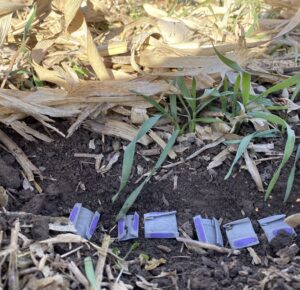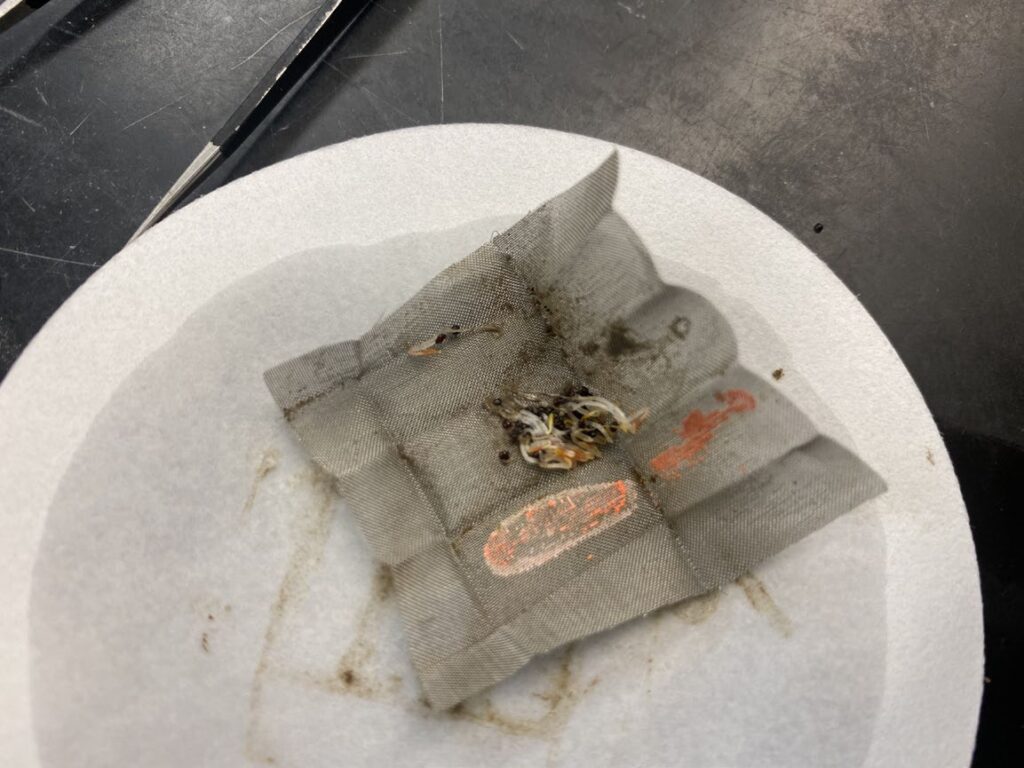
By Carol Brown
Cover crops provide several benefits to soil health, which in turn helps increase cash crop yield. Cover crops support soil health on the surface by reducing soil erosion and suppressing weeds. These plants also aid the cash crop below ground by increasing water filtration and building soil organic matter. Sarah Lancaster, Kansas State University assistant professor and extension specialist, is leading a study that may confirm another benefit of cover crops: weed seedbank depletion.
Through a soybean checkoff project funded by the North Central Soybean Research Program, Lancaster oversees the research being conducted in Kansas, Missouri, North Dakota, Indiana and Wisconsin. The group of researchers is hoping to find that cover crops can also help reduce weed seed viability in the soil.
“This research question came about as we think of all the ways that cover crops improve soil health,” remarks Lancaster. “But one of the things we don’t often discuss is that the increased biological activity in the soil by the cover crop could contribute to the degradation of weed seeds.”
In the fall of 2021, researchers in the five states sent fresh Palmer amaranth and waterhemp seeds to Lancaster’s lab. The weed seeds were cleaned, counted and packaged in fine mesh packets, and sent back to the respective researchers. They buried the weed seed packets in research plots and then planted cereal rye.

This past spring just prior to soybean planting, the researchers retrieved the first set of weed seed packets from the plots and sent them back to Lancaster’s lab for viability testing. The team will pull another set of seed packets at soybean harvest this fall, and the final set of packets will be unearthed next spring at cash crop planting.
Seedbank Deposits and Withdrawals
Weeds deposit their seeds into the soil seedbank annually, but Lancaster notes a previous study led by Jason Norsworthy at the University of Arkansas revealed that viability of Palmer amaranth and waterhemp seeds was reduced by about 90% after three years1. This is relatively short-lived as seeds go. But weed seed deposits are high, as both Palmer amaranth and waterhemp produce hundreds of thousands of seeds per plant each fall.
“There are several ways in which weed seeds are withdrawn from the seedbank,” Lancaster says. “These include seed germination and predation, meaning insects and earthworms are eating the seeds. Another way is for bacteria and fungi to grow on the seeds, causing microbial decay of the seeds.”
The research team expects the weed seeds in this study will only be vulnerable to the microbial activity, hopefully resulting in the bacteria and fungi in the soil killing the seeds. The mesh packets shouldn’t allow predators to access the seeds or any germinated seeds to escape.
Early Results
The team is early into the study with only the first set of weed seeds pulled and evaluated. KSU student Lily Woitaszewski prepared the seed packets last fall for each state and conducted the first germination tests from the weed seeds this spring. She will conduct germination tests again this fall on the second set of weed seed packets.
“Lily took the returned weed seeds, put them a growth chamber and checked daily for 10 days for germination,” Lancaster explains. “She determined how many seeds were still healthy and how many were not viable. Early evaluation showed no difference in weed seed viability between the cover crop plots and the plots without a cover crop. Overall weed seed viability for both waterhemp and Palmer amaranth was 90%. The second set of weed seeds is being collected now as soybeans are harvested.”
Reducing the weed seedbank is becoming increasingly important, as some weeds have become herbicide resistant over time. Anything that can be done to reduce the number of seeds germinating from the weed seedbank will be a benefit to farmers, Lancaster says, as the more weeds there are, the greater the likelihood is that some weeds will survive herbicide applications.
Cover crop biomass can help reduce weed emergence on the soil surface. Lancaster and her team are optimistic they will find that cover crops also help below ground with weed seedbank depletion, providing yet another weapon in the battle against weeds as well as an additional benefit for soil and crop health.
The post Cover Crops Could Be Another Weapon Against Weeds Beyond the Soil Surface appeared first on Soybean Research & Information Network.